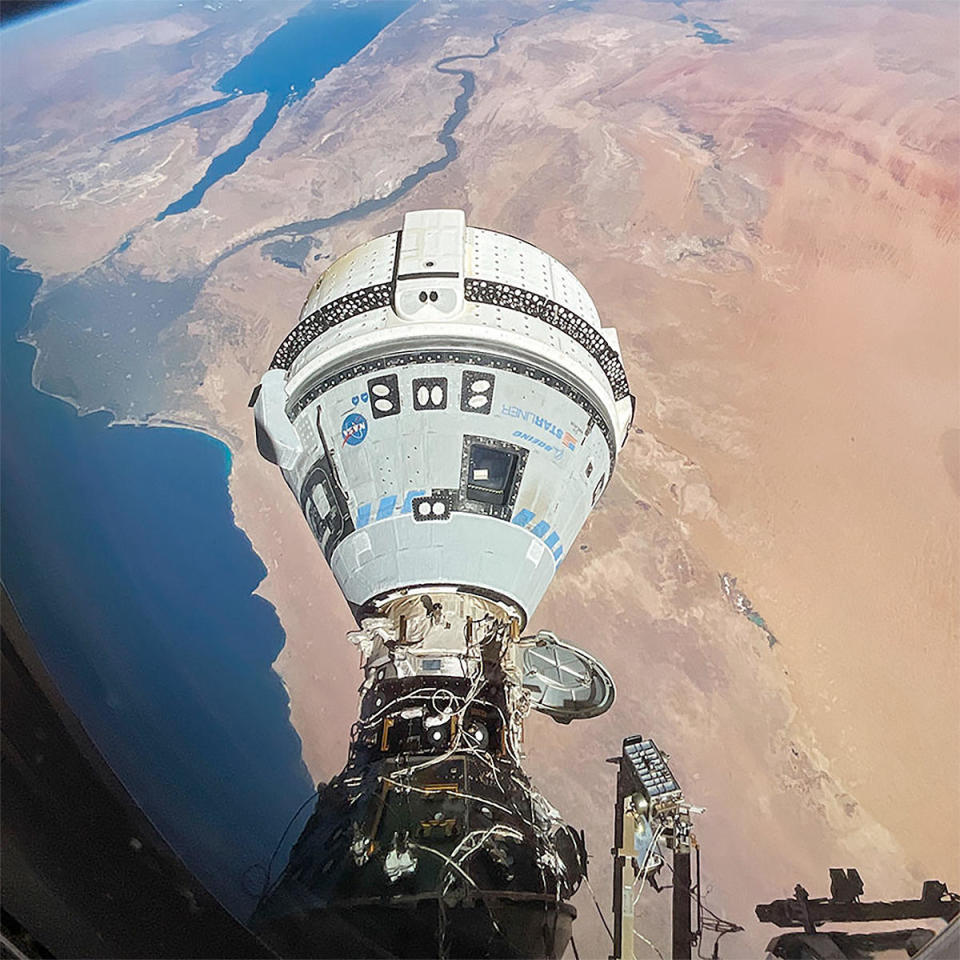Boeing's Starliner space capsule faces crucial tests
- Oops!Something went wrong.Please try again later.
Critical tests are on tap this weekend to confirm Boeing's Starliner capsule can safety carry its two-person crew back to Earth despite problems that emerged early in the mission, officials said Thursday.
Unexpected helium leaks and degraded maneuvering thrusters, discovered during the ship's rendezvous with the International Space Station in early June, triggered weeks of testing and analysis that have extended the ship's first piloted test flight from a little more than one week to nearly two months.
Steve Stich, manager of NASA's Commercial Crew Program, said Starliner commander Barry "Butch" Wilmore and co-pilot Sunita Williams, both veterans of earlier space station visits, have taken the extended mission in stride and are enjoying their bonus time in orbit.

As for when they might be cleared to return to Earth, Stich told reporters "we don't have a major announcement today relative to a return date. We're making great progress, but we're just not quite ready to do that."
"A very important set of tests" for Starliner
Two technical hurdles remain: tests this weekend to "hot fire" 27 maneuvering thrusters in the Starliner's service module to make sure they will work as expected between undocking and re-entry; and parallel testing to confirm five known helium leaks in the propulsion pressurization system have not worsened.
Pressurized helium is used to force propellants to the thrusters for ignition. The thrusters, in turn, are needed to re-orient the Starliner as required after undocking and to keep it steady when larger rockets fire to drop the ship out of orbit for re-entry and landing.
"We're going to fire all those thrusters through a number of pulses, just to make sure before we undock, that the whole system performs the way we expected and the way it did last time we checked it," Stich said. "We'll also get a chance to look at the helium system.
"It's been six weeks since we last checked that helium system, that was on June 15. So we'll pressurize manifold by manifold, and then hot fire the thrusters, and then we'll get a chance to look at the helium leak rates and verify that the system is stable."
All in all, "it's a very important set of tests over the weekend that we'll do," he said.
Assuming no major surprises crop up, a NASA flight readiness review will be held to outline the problems for senior management, along with the "flight rationale," that is, the analysis showing the problems are understood and pose no credible safety threat.
"There's some significant education of the leadership heading into this agency flight readiness review," Stich said. "We've struggled to explain all of what's going on, and I apologize for that. This is a very, very complicated subject."
The Starliner was launched on its first piloted test flight June 5. During the subsequent rendezvous with the International Space Station, multiple helium leaks were detected — one was known before launch — and five aft-facing maneuvering thrusters failed to operate as the flight software expected.
Four were later successfully test fired and one was declared failed.
The aft-facing thrusters were exposed to direct sunlight for extended periods, causing them to operate at higher than normal temperatures. That, plus the rapid-fire sequence of burns during the rendezvous, likely contributed to the observed performance.
To find out, Boeing took a flight thruster from another Starliner to a NASA test facility in White Sands, New Mexico, and ran it through two rendezvous sequences that replicated what the Starliner in orbit experienced along with five return-to-Earth, or "downhill," scenarios.
Similar thrust degradation was seen and when engineers disassembled the test thruster, a Teflon seal was found to be slightly deformed, likely due to exposure to one of the propellants, nitrogen tetroxide.
"The team is ... looking at that thruster to see could that particular seal survive the rest of the flight," Stich said. "If you look at what we did on that thruster, it shows that we can survive up to five downhill legs. So we're making sure that that seal stays intact."
As for the helium leaks, Stich said flight controllers pressurized the system for earlier tests in orbit and the known leaks did not get any worse; all were within acceptable limits.
"We're going to do a check this weekend on the helium leak scenario, and then right before undock, we'll re-pressurize the system and check the helium leaks. ... We're making sure all that's covered."
When the Starliner took off, its batteries were rated for 45 days in space. Based on their actual performance in orbit, Stich said that limit has been extended to 90 days. Thursday marked the ship's 50th day in space and Stich said Wilmore and Williams possibly could return to Earth by late August.
"I'm very confident we have a good vehicle to bring the crew back with," said Mark Nappi, Boeing's Starliner program manager. "We have to take the next steps to show that information to everybody else, and that leads up to the agency review, and that's what we're going to do over the next week."
Hydrothermal explosion sends water, rocks flying at Yellowstone National Park's Biscuit Basin

